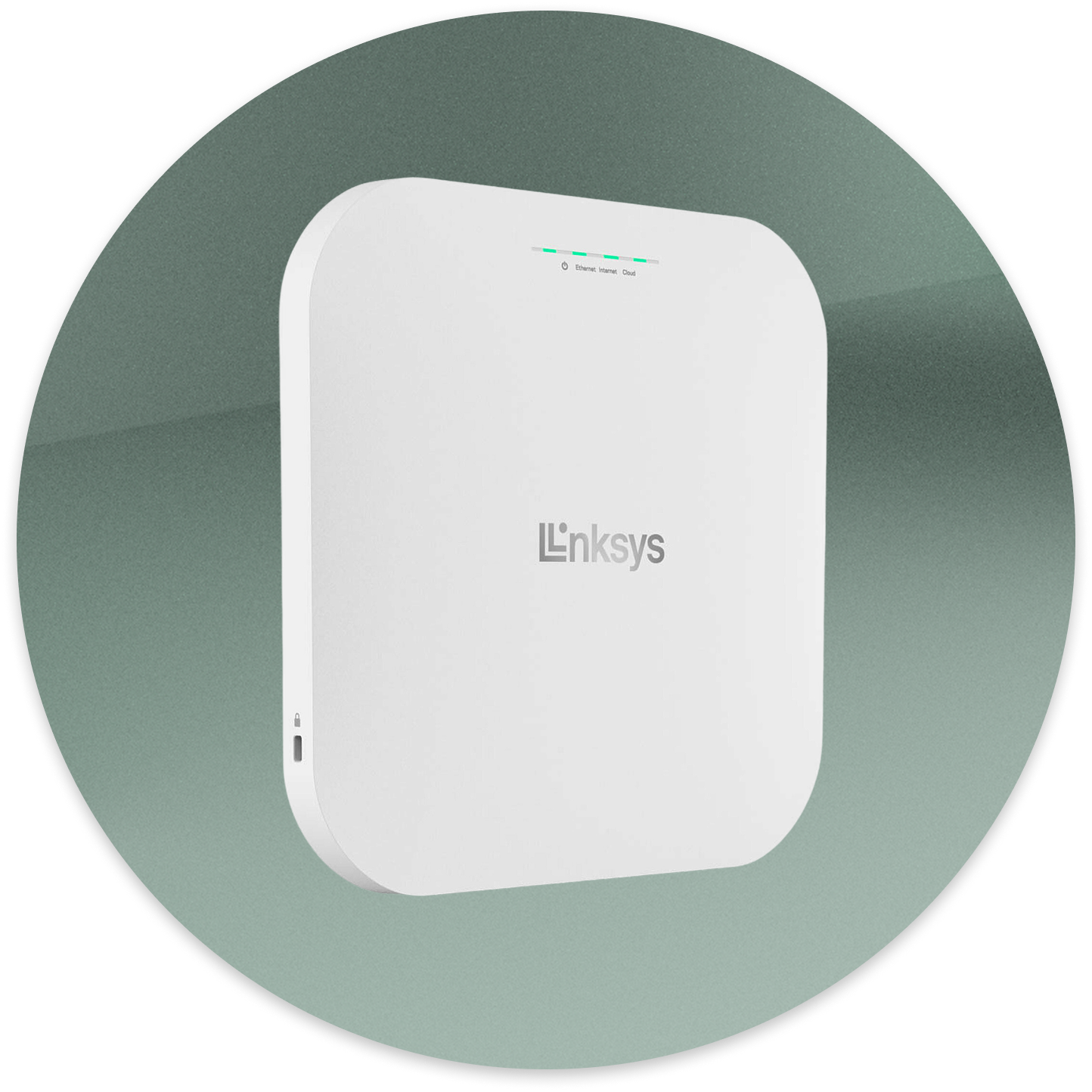An enterprise platform for managing access points at scale
Think of an office building that provides internet for dozens of people: company employees, building personnel, or visitors.
Each of these groups need their own WiFi networks, with varied levels of security.
Linksys Cloud Manager offers a turn-key solution with hardware and management with a cloud-based web application.
In addition to basic network management, it made sense for Cloud Manager to solve for other internet-related scenarios.
eg: a university that wants a branded log in screen on all of a department’s computers
To support these cases, LCM has add-on services, billed à la carte.

Given the influx of remote workers after 2019,
Linksys decided to launch “Linksys HomeWRK,” a solution to provide remote workers with upgraded network security and hardware.
HomeWRK would leverage LCM, built as an add-on service.
The model
A company could order several hundred routers, upload their VPN information through Linksys Cloud Manager, and ship the router directly to employees from the factory.
It was a quick product to market, utilizing much of the existing structure in Cloud Manager.
Compared to other add-on services, however, its setup and management was more complex.
In the beta release, our PM was receiving consistent feedback that setting up and using HomeWRK was confusing.

The product manager’s ask was to make UX improvements to the navigation and/or setup instructions.
I started with a 10,000 ft view by creating a site map, studying the site’s structure, followed by documenting interaction flows.
Studying current implementation

This test would be administered in a 1on1 zoom session, guided by a script. Users are required to share their screen and talk aloud as they perform tasks.*
*Test recruitment was performed with usertesting.com, targeting IT personnel who had experience supporting remote workers.
Next, I wanted to get specific feedback from users.
I put together a prototype of the current implementation’s key flows.

Suggested improvements
Improvements would be tested with the same scenarios and recruitment tasks.

Final proposal
Change navigation structure to separate HomeWRK as its own product
Create a global settings area
Implement simple 1-2-3 step onboarding instructions
Reframe “HomeWRK settings” as “HomeWRK functions”
Misc terminology edits
Results
Given the early stage of the HomeWRK product, we could only rely on the beta testers’ continued feedback.
Our PM was confident in the improvements and gave the green light for implementation, reporting general improved usability.









